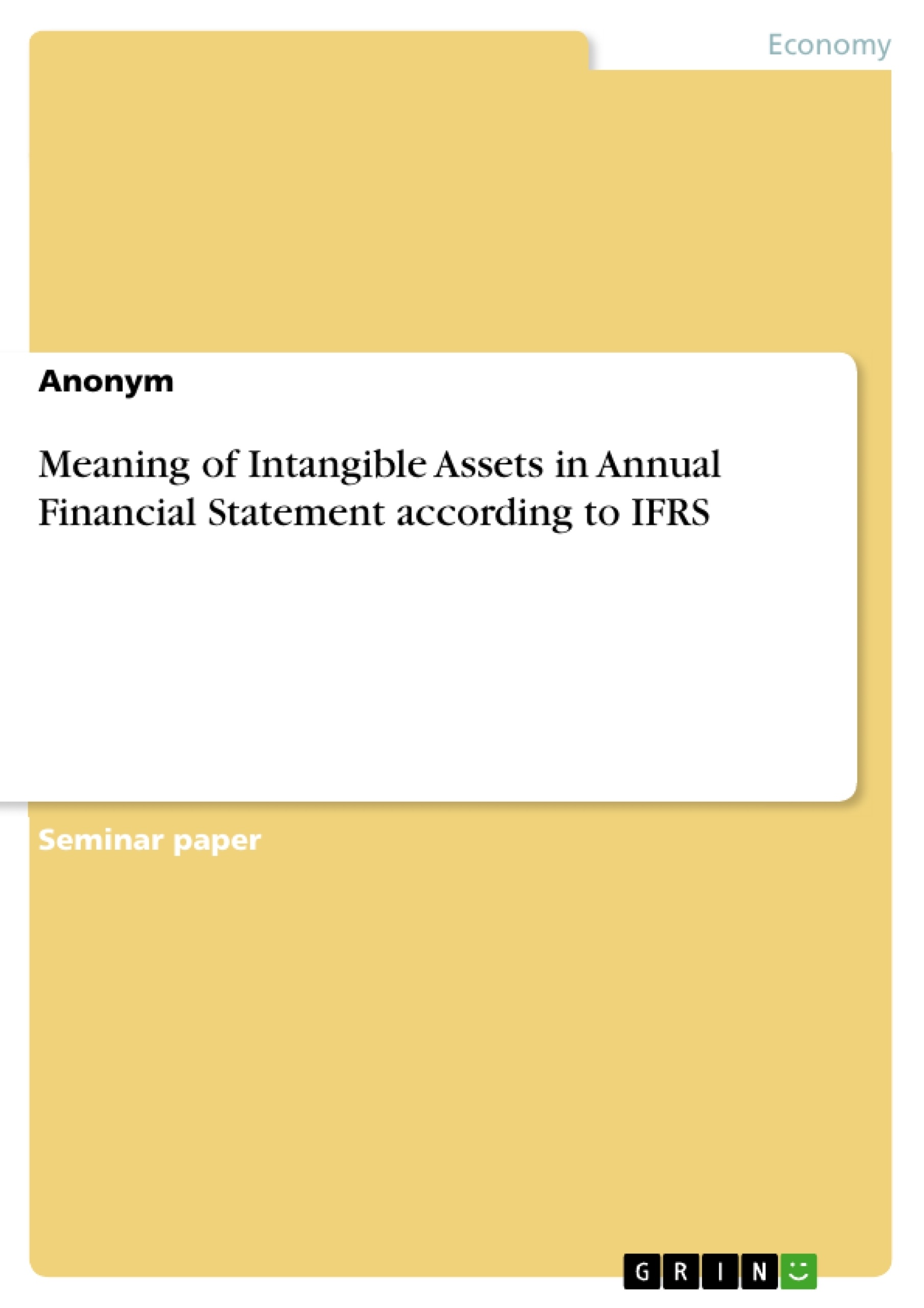The recording of financial instruments in the balance sheets of capital market-oriented companies is playing an increasingly important role in the course of globalization. At least since the outbreak of the international banking crisis in 2007, which later developed into a global financial crisis, financial instruments have been under close observation with regard to their accounting. At this point, intangible assets are critical to corporate value and can influence corporate financial policies. The question arises as to whether and to what extent this scope in terms of balance sheet policy is also used by the DAX 30 companies and what risk potential results from this. The aim of this study is to work out the meaning of intangible assets according to international accounting system and to analyze intangible asset developments at DAX 30 companies.
Inhaltsverzeichnis (Table of Contents)
- Introduction
- Scope of work
- Definitions of intangible assets
- Identifiability
- Controllability
- Future economic benefits
- Special forms of intangible assets
- Recognition
- Acquisition through a government grant
- Acquisition through exchange for intangible asset
- Separate Acquisition
- Acquisition as part of a business combination
- Internally generated intangible assets
- Research phase
- Development phase
- Original and derivative goodwill
- Measurement after recognition
- Cost model
- Revaluation model
- Analysis of company values based on DAX 30 companies
- Conclusion
Zielsetzung und Themenschwerpunkte (Objectives and Key Themes)
This study aims to analyze the importance of intangible assets in accordance with International Financial Reporting Standards (IFRS). The study aims to investigate the significance of intangible assets in corporate value and their influence on financial policies. The paper focuses on the DAX 30 companies, analyzing their accounting practices related to intangible assets.
- Definition and recognition criteria for intangible assets according to IFRS
- Analysis of intangible asset development within DAX 30 companies
- Impact of intangible assets on corporate value and financial policies
- Evaluation of the accounting practices of DAX 30 companies regarding intangible assets
- Risk potential related to intangible assets
Zusammenfassung der Kapitel (Chapter Summaries)
The introduction establishes the scope of the study, highlighting the growing significance of intangible assets in corporate finance. The paper further explores the definition of intangible assets, identifying key criteria including identifiability, controllability, and future economic benefits. The study then delves into the recognition of intangible assets, examining different acquisition methods, including government grants, exchanges, and business combinations. The paper also investigates the recognition of internally generated intangible assets, analyzing the research and development phases. Finally, the chapter discusses the measurement of intangible assets after recognition, exploring both the cost model and the revaluation model.
Schlüsselwörter (Keywords)
This study focuses on the critical role of intangible assets in the financial statements of companies. The analysis includes the definition and recognition criteria for intangible assets according to IFRS, with a particular emphasis on the development of intangible assets within DAX 30 companies. The study examines the impact of intangible assets on corporate value and financial policies, exploring the risk potential associated with these assets. Key terms include intangible assets, IFRS, DAX 30 companies, corporate value, financial policies, and risk potential.
- Quote paper
- Anonym (Author), 2021, Meaning of Intangible Assets in Annual Financial Statement according to IFRS, Munich, GRIN Verlag, https://www.grin.com/document/1325902



